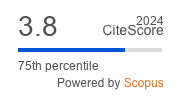Article | Open Access
Adaptive Reuse of High-Rise Buildings for Housing: A Study of Istanbul Central Business District
| Views: | 3142 | | | Downloads: | 1803 |
Abstract: The abrupt shift to remote work due to the Covid-19 pandemic increased vacant office spaces globally, especially in high-rent central business districts (CBDs). These vacant office spaces offer the potential for conversion into housing, addressing the shortage of affordable housing in central areas. Additionally, this topic presents a unique experimental ground for architecture students. This study focuses on the Istanbul CBD as a case study, examining the historical developments that led to a rise in office vacancy rates and housing inequality, and exploring the potential for adaptive reuse of these vacant office buildings. A key focus of this study is to underline the pedagogical value of adaptive reuse, highlighting how such projects can inspire more diverse and equitable housing models, fostering experimental and sustainable design approaches. It systematically evaluates the outcomes of a 4th-year architectural design studio that focuses on the adaptive reuse of the Tat Towers in the Istanbul CBD, a structurally vacant high-rise office building, and asks: How does the context of adaptive reuse enable a different design approach, and, potentially, new spatial norms and standards to emerge, and how might this hold a pedagogical value for architecture education? Following these questions, the article discusses how norms and standards are not only culturally but also typologically contextual, and how the students have explored how norms and standards might change, outlining new design approaches to adaptive reuse.
Keywords: adaptive reuse; building conversion; design studio; high-rise buildings; housing; office vacancy; spatial norms
Published:
Online discussion: Watch the conversation about this article on Let's Talk About
© Ayşe Zeynep Aydemir, Tomris Akın. This is an open access article distributed under the terms of the Creative Commons Attribution 4.0 license (http://creativecommons.org/licenses/by/4.0), which permits any use, distribution, and reproduction of the work without further permission provided the original author(s) and source are credited.


